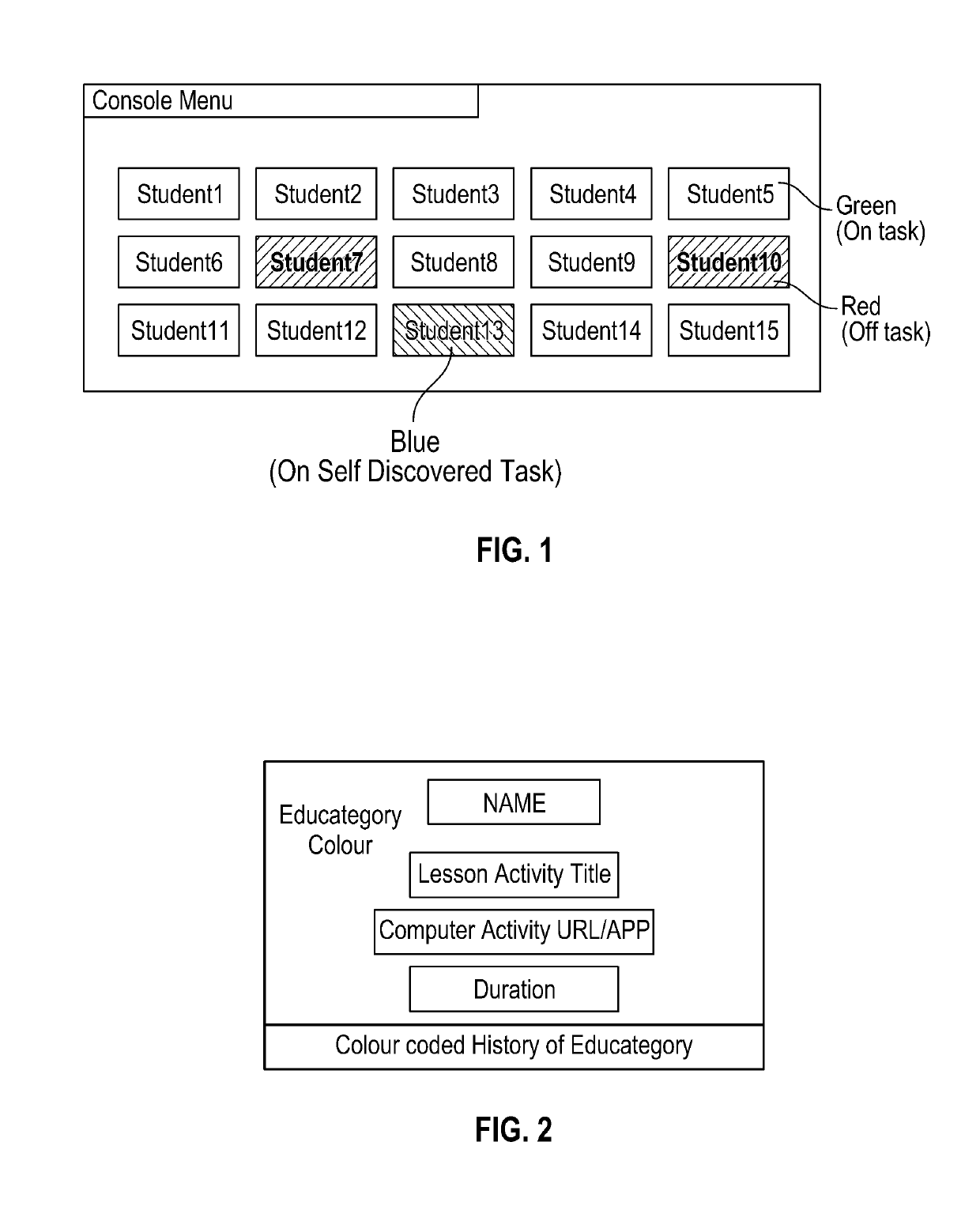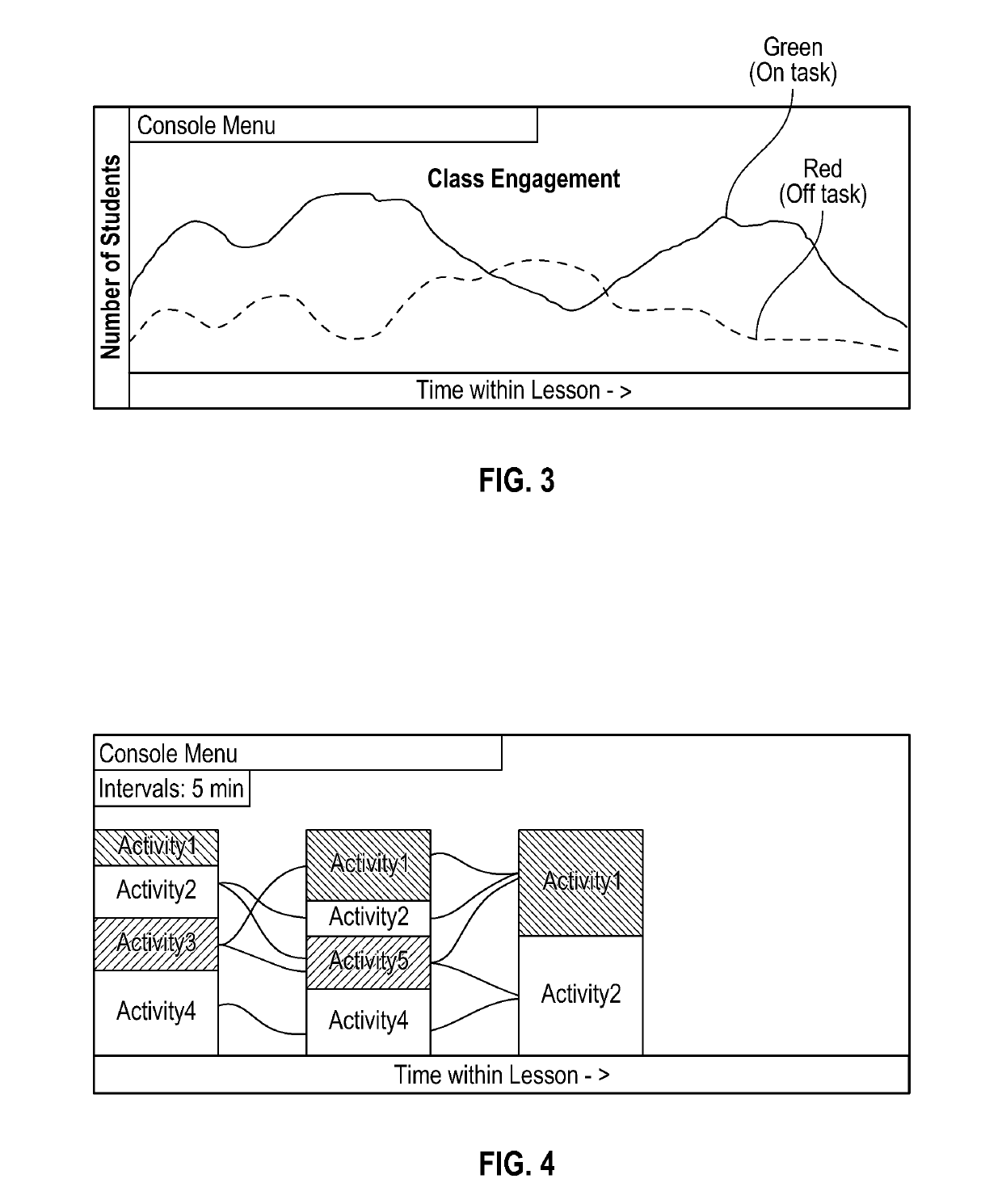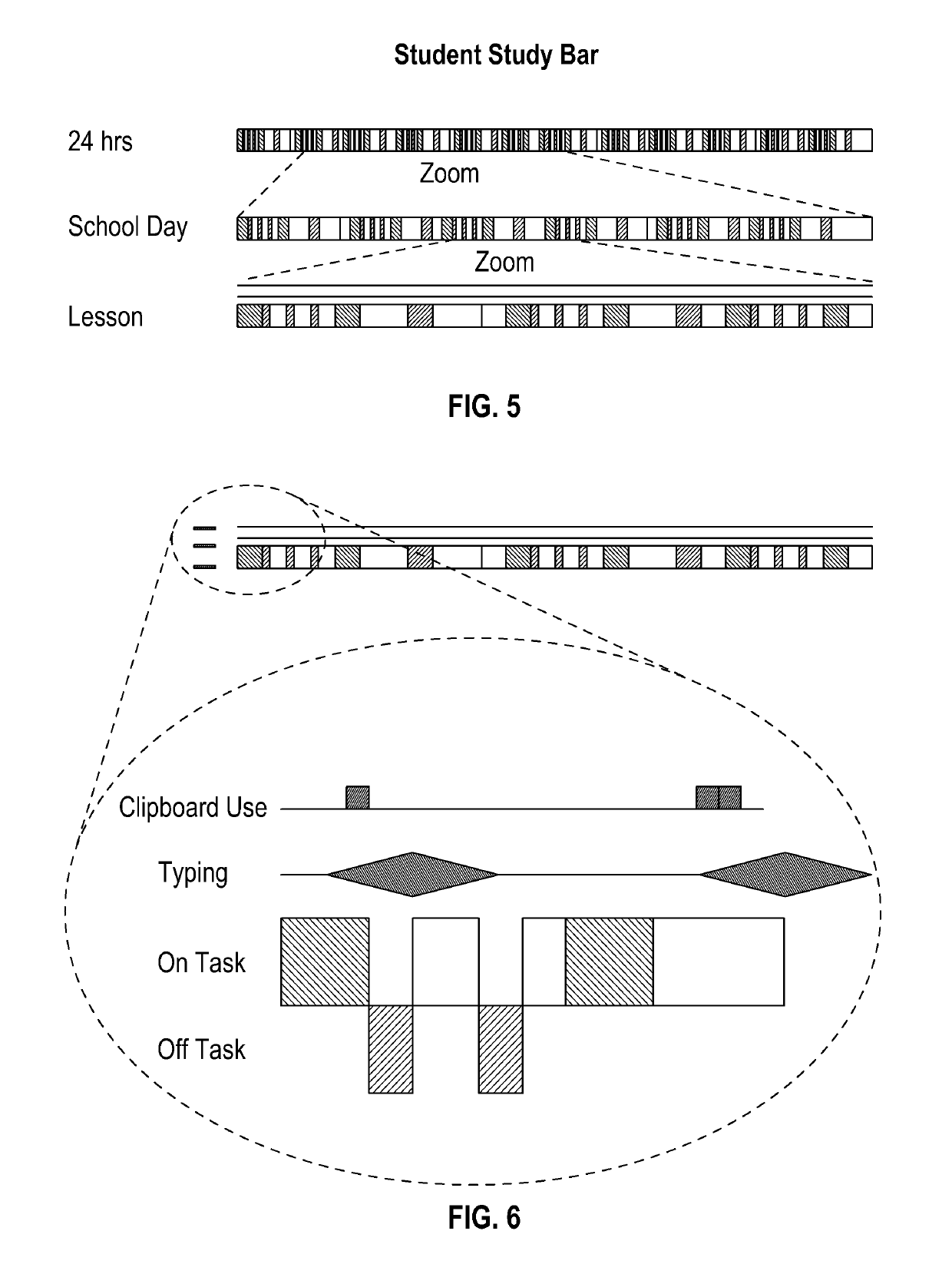Free learning analytics methods and systems
a learning analytics and learning analytics technology, applied in the field of free learning analytics methods and systems, can solve the problems of inability to apply real-world classroom settings, limited la analysis to single moocs, and unsuitable for the mostly unstructured computer use environment of secondary schools and its face-to-face teaching environmen
- Summary
- Abstract
- Description
- Claims
- Application Information
AI Technical Summary
Benefits of technology
Problems solved by technology
Method used
Image
Examples
Embodiment Construction
[0078]In the following detailed description, reference is made to the accompanying drawings (FIGS. 1-24), which form a part hereof. In the figures, similar symbols typically identify similar components, unless context dictates otherwise. The illustrative embodiments described in the detailed description, figures, and claims are not meant to be limiting. Other embodiments may be utilized, and other changes may be made, without departing from the spirit or scope of the subject matter presented here.
REPRESENTATIVE EMBODIMENTS
[0079]The following descriptions illustrate several preferred exemplary embodiments of the invention by reference to the accompanying drawings.
[0080]FIG. 1—Live (Real-Time) Classroom Engagement Pages. FIG. 1 shows a representative view of a real-time classroom engagement page that can be displayed on a teachers computer monitor. This dashboard view shows for each of 24 students in the class her / his current activity, and whether s / he is on task, which on-taskness in...
PUM
 Login to View More
Login to View More Abstract
Description
Claims
Application Information
 Login to View More
Login to View More - R&D
- Intellectual Property
- Life Sciences
- Materials
- Tech Scout
- Unparalleled Data Quality
- Higher Quality Content
- 60% Fewer Hallucinations
Browse by: Latest US Patents, China's latest patents, Technical Efficacy Thesaurus, Application Domain, Technology Topic, Popular Technical Reports.
© 2025 PatSnap. All rights reserved.Legal|Privacy policy|Modern Slavery Act Transparency Statement|Sitemap|About US| Contact US: help@patsnap.com



